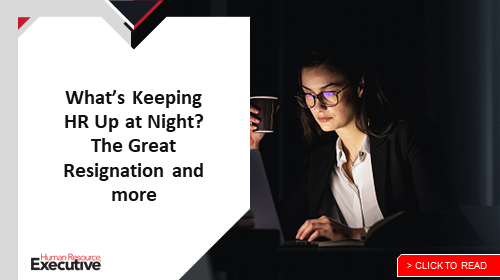IBM and EY’s recent unveiling of their Talent Center of Excellence—a set of AI-powered cloud solutions that aims to provide talent, HR, mobility and payroll services in a single offering for Fortune 500 companies—is addressing a key need of HR leaders: managing multiple cloud-based applications that were never designed to operate with one another.
This COE, which is part of an alliance established between the two technology consulting providers in 2020, combines EY’s Organization & Workforce, Mobility and HR Transformation solutions with IBM’s Talent Transformation business, hybrid cloud and AI offerings.
So far, two clients are using the talent COE: a financial services firm based in Australia and the Cystic Fibrosis Foundation.
Bringing order to a crowded and often conflicted cloud landscape could ease the tech burdens of CHROs and the IT leaders who serve the CHROs, says market analyst Josh Bersin.
“IBM and EY are essentially bringing together their joint expertise in HR administration, employee experience, and remote and hybrid work to help large companies outsource some of these important employee service problems,” says Bersin, who will discuss the HR technology market during his keynote presentation at the 2022 HR Tech Conference, which takes place Sept. 13-16 in Las Vegas. Register here.
“Data is a critical part of this, so this offering will only work well when companies integrate their employee data with these service centers,” he adds.
Most companies now operate what Amy Wright, global managing partner, talent transformation for IBM Consulting, calls “hybrid clouds,” or multiple cloud-based solutions from different vendors that often do not interact well with each other.
Related: To learn more about HR technology advances, attend the HR Tech Conference. See more about what’s on the program here.
HR’s “entire IT function is changing and, in the middle of this [environment], there is the complexity of multiple vendors and data challenges as apps are modernized to shift to the cloud,” Wright says. “It becomes unbelievably complicated.”
If this complexity can be navigated, data-driven talent solutions have the potential to deliver “major or even transformational impact,” according to Steve Goldberg, HR technologist and analyst. But organizations will achieve those outcomes only after they optimize their data management practices and related infrastructure.
“Until then, ‘HR data distrust’ and costly reconciliations of foundational people data between HR, finance and business areas will persist,” he warns.
Despite HR’s enthusiastic adoption of cloud services, many organizations still operate much the same way they did when applications resided in the back office or on users’ desktops, says Liz Fealy, deputy leader and workforce advisory leader for EY Global People Advisory Services.
 HR and technology leaders “never really changed how the work was getting done and they didn’t optimize their operations model. They didn’t really change their processes,” she says.
HR and technology leaders “never really changed how the work was getting done and they didn’t optimize their operations model. They didn’t really change their processes,” she says.
Managing a crowded cloud
Taming cloud offerings is not for the faint of heart. Most larger companies attempt this on their own and it’s an ongoing and massive investment area, says Bersin.
“Despite the vast functionality of most HR software platforms, none of this data is all in one place. So, in order to really build a fantastic employee experience and leverage the data in the cloud, companies have to focus heavily on building an integrated ’employee system of record’ for the entire employee experience, not just payroll and core HR,” he says.
Failing to connect data held in an array of cloud apps means that HR and IT leaders are not achieving the best performance because they failed to change what IBM’s Wright calls “the people process piece.” She adds, “instead, they blame the technology and the data’s refusal to line up and work in these systems.”
 Along with mobility and payroll solutions, EY and IBM’s talent COE will offer consulting services that will address talent acquisition, skills sharing and employee retention.
Along with mobility and payroll solutions, EY and IBM’s talent COE will offer consulting services that will address talent acquisition, skills sharing and employee retention.
For example, EY’s Fealy says she is working on a technology implementation that allows a client’s employees to shadow EY consultants and technologists for the project.
“Once they’re up to speed, we can roll off and they can take over that work,” she says.
Practices like this could be key as organizations enter the post-COVID era.
“If there’s one thing that we’ve learned through the pandemic, it’s the need to build what we call the ‘irresistible employee experience’,” says Bersin. “Any investment in data, services, analytics and tools to make employees more empowered and engaged has an enormously high ROI in this tumultuous period of the global economy.”
To learn more from leading CHROs and CPOs, register here for HR Tech 2022 in Las Vegas.

